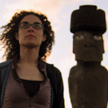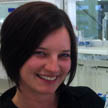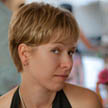I’m a Scientist is like school science lessons meet the X Factor! School students choose which scientist gets a prize of $1000 to communicate their work.
Scientists and students talk on this website. They both break down barriers, have fun and learn. But only the students get to vote.
This zone is the Organs Zone. It has scientists studying health and disease in various parts of our bodies. Who gets the prize? YOU decide!









Probably not, organopus!
It might be possible to clone the animal if the DNA was intact, a bit like they did in Jurassic Park, but we aren’t there just yet!!
0
Bones do contain lots of DNA deep in the marrow, but it tends to break up into tiny fragments pretty quickly…and it’s not easy to put back together again! It would be easier to work from a whole preserved animal…and there are scientists that are working on that. The question is….is that something that we should do? You need at least 500 different individuals to have a healthy breeding population. One or two really isn’t going to do it. And things like the Tassie Tiger would be fine…but bringing back mammoths would have some problems. Their habitats no longer exist.
0
Like carina said, it depends on the preservation of the fossil/bones. By definition, fossils are “the remains or impression of a prehistoric organism preserved in petrified form or as a mold or cast in rock”. If it’s an impression, then no. If the organism has somehow been preserved, then there are traces of DNA that can still be extracted (crazy huh?!). It is possible, but takes a lot of time, skill and a “green thumb” (so to speak).
So to answer your question: it’s possible. But not like in Pokemon! It would take ages and several different techniques, lots of scientists and a lot of luck. 😀
0